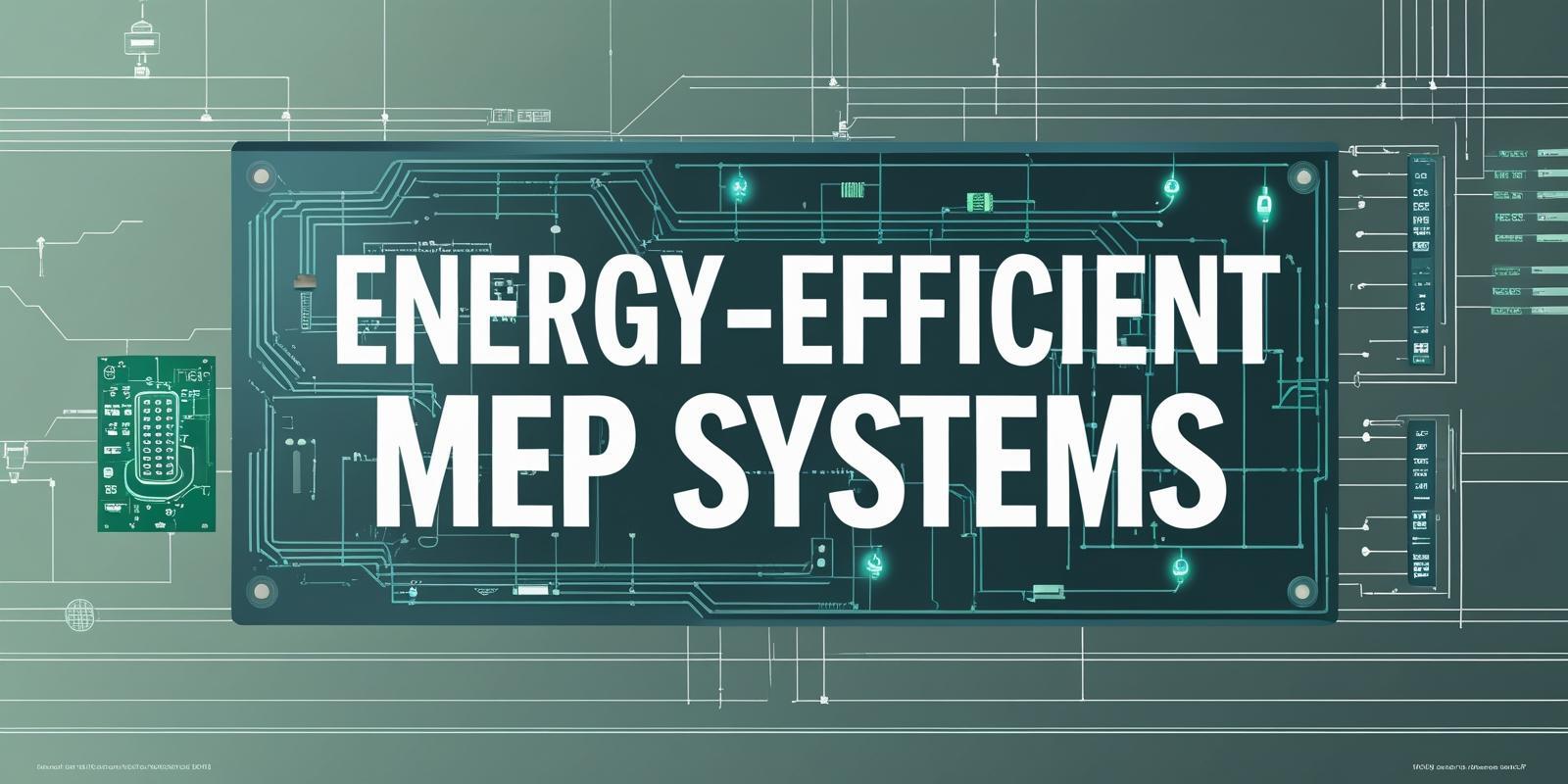
In today's fast-changing construction landscape, designing energy-efficient MEP systems is no longer a choice, it is a necessity. Whether you are a seasoned MEP engineer or a budding enthusiast, understanding how to design sustainable MEP systems can shape your career and the planet's future. From energy-efficient HVAC systems to automated controls, the focus is all about innovative design and clever technology.
We are not just talking about cost savings here, though that is a big part of it. Energy-efficient buildings reduce greenhouse gases, lower operational expenses, and comply with increasingly strict regulations. This shift is shaping the entire MEP industry, making it essential for professionals to embrace smarter tools like Revit MEP and BIM software and to sharpen their collaboration skills.
In this blog, we will explore how you can integrate energy efficiency measures into your MEP design, optimise different system types, use automation and BIM MEP services, and follow the best standards. Ready for a greener future in MEP engineering? Let us dive in.
Why Is Energy Efficiency Important in MEP Design?
Let us face it, buildings consume a massive portion of global energy. According to industry stats, they account for nearly 40% of total energy consumption. This means MEP systems, which include mechanical, electrical, and plumbing elements, have a huge role to play in reducing energy use and emissions.
Designing energy-efficient MEP components is a win-win. It improves building performance while reducing energy bills, leading to long-term benefits of energy efficiency for both clients and the environment. Plus, there are the environmental benefits of energy efficiency such as reduced carbon emissions and improved air quality, which help meet sustainability goals.
Moreover, energy regulations and green building certifications are pushing the MEP industry to think differently. Incorporating energy efficiency measures at the design stage can make compliance easier and more cost-effective. This is where tools like MEP design software and BIM MEP services come into play, offering smarter ways to plan and execute your projects.
How Can HVAC, Electrical, and Plumbing Systems Be Optimised?
1. Optimising HVAC Systems
Energy-efficient HVAC systems are at the heart of any sustainable building. Heating and cooling account for a big chunk of energy use, so streamlining these operations is key. Proper equipment sizing, demand-controlled ventilation, heat recovery, and zone-based temperature controls all help reduce energy loads.
Incorporating Revit MEP allows you to model, simulate, and adjust these systems virtually, ensuring you avoid oversizing and identify energy-saving opportunities early on. Thermal load analysis using MEP design software also allows better design integration with other building systems.
Smart thermostats and sensors are now commonly integrated with MEP systems to adjust temperature and airflow automatically, contributing to overall energy-efficient buildings.
2. Optimising Electrical Systems
Lighting and electrical equipment consume a significant amount of energy, particularly in commercial buildings. Implementing LED lighting, occupancy sensors, daylight harvesting, and automated control systems makes a huge difference.
The MEP in architecture approach means that lighting, heating, and other energy loads can be analysed in the early design stages using Revit MEP software and BIM software. It also helps in selecting energy-efficient electrical panels and power distribution systems that are better suited to low-carbon goals.
Renewable energy integration, like solar panels, is another strong strategy for improving energy-efficient MEP electrical designs.
3. Optimising Plumbing Systems
Water-saving fixtures, leak detection systems, and low-flow fittings are great for improving efficiency in plumbing. Efficient hot water distribution and greywater recycling are key aspects of sustainable plumbing MEP projects.
Using MEP BIM modelling for plumbing allows you to simulate pipe layouts, pressure losses, and flow rates, helping you reduce energy use in pumps and heaters. BIM MEP services are particularly useful when coordination between HVAC, electrical, and plumbing becomes complex.
By combining smart technology with energy efficiency measures, plumbing systems can go beyond water savings to deliver real energy gains.
What Role Does Automation and BIM Play in Energy Efficiency?

Technology is transforming how MEP engineering tackles energy challenges. Automation and BIM MEP services have revolutionised the design, operation, and maintenance of buildings. With BIM software, you can visualise, analyse, and tweak systems before a single pipe or wire is installed.
Automated building management systems (BMS) monitor energy usage in real time. They can optimise MEP systems by controlling HVAC operations, lighting schedules, and even water supply based on actual occupancy patterns.
Meanwhile, MEP BIM modelling helps avoid clashes, saving energy wasted in redesign or rework. When you are working on multi-disciplinary MEP works in construction, digital tools like collaboration tools make team coordination smoother.
Revit MEP is one of the most widely used MEP software tools for integrating all systems into one cohesive model. This makes your MEP construction management more streamlined and responsive to energy data and feedback.
The synergy between automation and BIM boosts collaboration skills, improves design integration, and paves the way for smarter MEP infrastructure.
Which Standards and Best Practices Guide Efficient MEP Design?
To ensure you are truly designing energy-efficient MEP solutions, you must follow recognised standards and guidelines. Here are some best practices and industry norms to keep in mind:
1. ASHRAE Standards
Especially Standard 90.1 for energy efficient buildings and Standard 189.1 for green building design.
2. LEED Certification
Offers points for energy efficiency- measures in MEP systems, rewarding integrated design and renewable energy usage.
3. BREEAM
A leading method in the UK for assessing the sustainability performance of buildings.
4. Energy Simulation
Run simulations early in design using tools like Revit MEP software or IESVE to predict energy consumption.
5. Commissioning Plans
Always test and verify the performance of MEP systems after installation to ensure long-term energy efficiency.
6. Integrated Design Approach
Use collaboration tools and build strong collaboration skills across disciplines to maximise efficiency through teamwork.
Also, adopt lifecycle thinking. The most energy-efficient MEP solutions consider long-term use, maintenance, and adaptability. Keep sustainability at the forefront of every MEP design.
Conclusion
Designing energy-efficient MEP systems is no longer just a trend, it is the future of construction. As a MEP engineer, your role is crucial in shaping smarter, greener buildings through informed design choices and advanced tools. From optimising energy-efficient HVAC systems, electrical networks, and plumbing lines to leveraging automation and BIM MEP services, every decision counts.
With the right MEP software, standards, and collaboration tools, the potential to build truly energy-efficient buildings is massive. Therefore, enrolling for a course that offers holistic learning opportunities, such as the BIM Professional Course for MEP Engineers by Novatr is ideal.
Remember, energy efficiency means not limited to just saving power, it is about designing responsibly, reducing environmental impact, and delivering lasting benefits of energy efficiency. So, whether you are modelling in Revit MEP or working in MEP construction management, think smart, think green.
Visit our Resources Page to learn about the latest developments in the built environment.
Welcome to a new era of sustainable MEP works in construction, let us build it better, together.
Was this content helpful to you



.jpeg)
.png)

.png)
